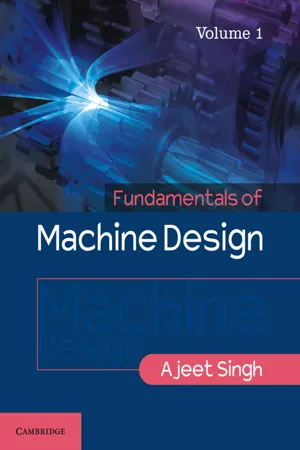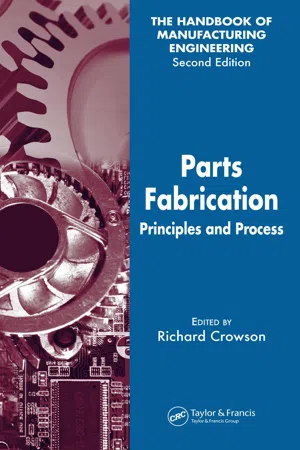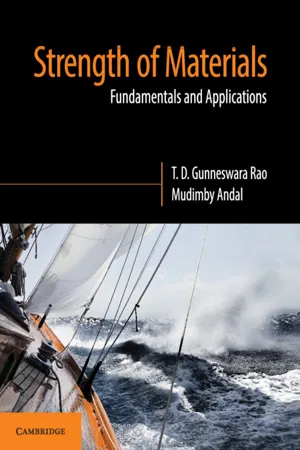Technology & Engineering
Bending Stress
Bending stress refers to the internal stress that occurs in a structural component when subjected to bending moments. It is caused by the distribution of forces and moments acting on the material, resulting in tension on one side and compression on the other. Understanding bending stress is crucial in designing and analyzing the strength and stability of beams, columns, and other structural elements.
Written by Perlego with AI-assistance
Related key terms
1 of 5
5 Key excerpts on "Bending Stress"
- eBook - PDF
- Ajeet Singh(Author)
- 2017(Publication Date)
- Cambridge University Press(Publisher)
Outcomes Learn meaning of Bending Stress and different common types of loads Bending Stress relation with bending moment and modulus of section Calculation of moment of area Area, moment of inertia, modulus of section, and radius of gyration for different sections Types of beam supports Drawing shear stress and bending moment diagrams Expressions for bending moment, shear force, and deflection of beams with various types of supports and loads Calculation of deflection of beams Expressions for neutral and central axes of curved beams Stress pattern and analysis of curved beams Designing parts with curved beams such as C clamp and press frame 6.1 Bending Stresses There is no single Bending Stress as such, but Bending Stress means stresses (both tensile at bottom and compressive at top) developed due to bending. When a load is applied to a beam at right angles to its axis, it gets deflected. The beam can be simply supported at its ends or as a cantilever, fixed only at one end. Neutral axis of a beam is, where the stress is zero. For a beam of rectangular cross-section it is at the middle as shown in Figure 6.1(a). The load can be a single point load [Figure 6.1(b)], or point loads at many places along its axis, or a Uniformly Distributed Load (UDL) C H A P T E R 6 Bending Stresses Bending Stresses 161 [Figure 6.1(c)] The area above the Neutral Axis (NA) undergoes compression, while the area below the NA is under tension. Stress pattern is shown in Figure 6.2. The stress is proportional to the distance Y from the NA. In addition to compressive and tensile stress, the load also tries to shear the beam at the ends. - eBook - PDF
Parts Fabrication
Principles and Process
- Richard Crowson(Author)
- 2006(Publication Date)
- CRC Press(Publisher)
1 Principles of Structural Mechanics Jack M. Walker 1.0 INTRODUCTION TO MECHANICS This chapter is intended for those who may not have an extensive background in structural mechanics, or who have not used some of that knowledge recently and need a refresher. The working manufacturing engineer today is involved in product design, tool design, process selection and development (both parts fabrication and assembly), materials, and many other areas that require an analytical evaluation for proper understanding. In the field of metallurgy, for example, terms such as stiffness, stress, strength, elasticity, and so forth are the language involved—and sometimes we tend to use some of the terms incorrectly. In the fabrication of sheet metal parts, the elongation and yield strength are key elements. In machining, shear may play an important role in understanding cutting principles and selecting the proper cutting tool for a specific material. To understand the discussion of problems in materials and processes, it is essen-tial to know the basic principles of forces in equilibrium. Not all of the elements of today’s complex structural considerations are introduced here. Rather, the intent is to establish a set of definitions and relationships that are needed to understand terms such as tension, shear, compression, and bending . In order to use terms such as stiffness, yield strength, deflection, stress, and strain correctly, the author feels that mathematical relationships offer the only logical approach to definition and under-standing. Care has been taken to avoid the use of advanced mathematics; knowledge of arithmetic and high school algebra is all that is needed. It is the desire of this author to present some simple solutions to everyday structural problems to those individuals with little or no knowledge of mechanics. 1.1 DEFINITIONS OF FORCE AND STRESS 1.1.1 Force Force may be defined as that which exerts pressure, motion, or tension. - eBook - PDF
Strength of Materials
Fundamentals and Applications
- T. D. Gunneswara Rao, Mudimby Andal(Authors)
- 2018(Publication Date)
- Cambridge University Press(Publisher)
To quantify stress ‘s’ in terms of external moment, equate the internal couple developed due to elemental forces within the cross-section to the external BM. Internal moment = A F y d Ú ( ) A E y A y R d = Ú = 2 is constant . A E E y dA R R Ê ˆ Á ˜ Ë ¯ Ú ∵ M is the external moment. Bending Stress 137 \ 2 E M y dA R = Ú 2 · y dA Ú is the second moment of area (I). \ E M I R = Or . M E I R = (4.3) The limiting moment or MR of the cross-section is given by allowable max MR [ ] . I y s È ˘ = Í ˙ Î ˚ (4.4) Allowable stress depends on the material; max I y depends on the cross-section. This term max I y is referred as ‘section modulus’. More the section modulus, more is the MR. Section modulus is denoted by the letter ‘Z’, units are mm 3 . An engineer can design better cross-sections, having higher section modulus keeping the cross-sectional area same. Curvature of a beam = 1 R \ 1 1 M M y R EI E y I E y y s Œ = = = = or 1 R y Œ = fi Curvature of a beam is nothing but the slope of strain variation diagram across the depth of the beam. From Eqs. (4.2) and (4.3) M E I R y s = = M = BM acting at the section under consideration I = Second moment of area about neutral axis or centroidal axis E = Modulus of elasticity of the material of the beam R = Radius of curvature of the deflected profile of the beam s = Normal stress developed due to bending over a fiber located at a distance y from the neutral axis. STRENGTH OF MATERIALS 138 FIGURE 4.9 In the case of bending, the fiber far away from neutral axis is critical. If the maximum stress within the cross-section reaches the limiting value, the failure of the cross-section takes place. PROBLEM 4.1 Objective 1 Determine the maximum stress induced in a metallic strip of thickness 10 mm wounds around a drum of radius 1 m. The modulus of elasticity of the material of the metallic strip is 80 GPa. - eBook - ePub
- James H. Allen, III(Authors)
- 2011(Publication Date)
- For Dummies(Publisher)
The object experiences small-enough displacements such that deformations don’t induce additional stresses due to the eccentricity of internal loads. When deformations of beams remain very small, the analysis can (and often does) neglect axial effects. Small displacement theory affects the expressions for deformation by allowing trigonometric identities to be simplified, which influences internal force component calculations from statics.Elastic behavior: Elastic behaviorComputing stresses in pure-bending applications The normal stress due to bending can be computed from the following basic relationship:means that even though a beam or member deforms when you subject it to a load, the deformation disappears and the object returns to its original position when you remove the load. If any portion of the deformation of an object remains after the load has been removed, the behavior is referred to as aplastic behavior. Plastic behavior is a complicated issue that is covered in many advanced mechanics classes. In this text, all behavior is considered elastic.In this relationship, the bending axisis the centroidal axis about which the internal moment is acting. Although components of the moment can actually act about any three of the Cartesian axes, the bending axes are always contained within the cross section of the member. The third axis (which is normal to the cross section) is a longitudinal axis. Moments about this third axis are known astorsional moments and cause twisting (not bending), which I discuss in more detail in Chapter 11.This relationship shows that the stresses for linear, elastic objects at a given location within a cross section are directly proportional to the distance of that cross section from the neutral axis. Normal stresses from bending can be the result of bending about either of the centroidal axes, or a combination of both.In calculating Bending Stresses, which moment of inertia you use is especially important because you can actually have multiple moments acting simultaneously about different bending axes. This phenomenon is known as - eBook - ePub
- Robert L. Mott, Joseph A. Untener(Authors)
- 2021(Publication Date)
- CRC Press(Publisher)
7–7 illustrate the process.Example Problem 7–5A beam to be made from ASTM A36 structural steel plate is to be designed to carry the static loads shown in Figure 7–16 . The cross section of the beam will be rectangular with its long dimension vertical and having a thickness of 1.25 in. Specify a suitable height for the cross section.SolutionFIGURE 7–16 Loading and cross section for beam in Example Problem 7–5 .Objective Specify the height of the rectangular cross section. Given Loading pattern shown in Figure 7–16 ; ASTM A36 structural steel. Width of the beam to be 1.25 in.; static loads.Analysis The element will be safe if and only if: σ applied ≤ σ designTo find the minimum height for the cross section, let σ applied = σ designApplied stress: σ applied = M/SDesign stress: σ design = s y /NResults Determine the maximum bending moment, M . Figure 7–17 shows the completed shearing force and bending moment diagrams. The maximum bending moment is 45 900 lb · in. between the loads, in the middle of the beam span from x = 3–9 ft.From Table 7–1 , for static load on a ductile material,σ d=s y/ 2From Appendix A–12 , s y = 36 000 psi for ASTM A36 steel. For a static load, a design factor of N
Index pages curate the most relevant extracts from our library of academic textbooks. They’ve been created using an in-house natural language model (NLM), each adding context and meaning to key research topics.




